Archived Blog Posts
Crafting Resilience: Building a Budget-Friendly DIY Emergency Kit
1/3/2024 (Permalink)
Emergencies can strike at any time, and having a well-prepared emergency kit can make all the difference in navigating unexpected situations. While pre-assembled kits are available for purchase, building your own DIY emergency kit on a budget can be a rewarding and cost-effective approach. In this blog, we'll guide you through the process of creating a comprehensive and budget-friendly emergency kit that ensures you're ready for the unexpected without breaking the bank.
Start with the Basics
Begin by identifying the essentials for survival. These include water, non-perishable food, a first aid kit, a flashlight, and basic hygiene items. Opt for cost-effective options and buy in bulk when possible.
Water and Food
Water is a non-negotiable necessity in any emergency kit. Rather than purchasing bottled water, consider investing in a reusable water container and water purification tablets. This ensures a sustainable and budget-friendly approach to staying hydrated.
Select non-perishable food items with a long shelf life. Canned goods, granola bars, and dried fruits are affordable options. Look for items that are nutrient-dense and require minimal preparation.
First Aid Kit
Building a budget-friendly first aid kit involves purchasing individual items and assembling them in a compact container. Include bandages, antiseptic wipes, pain relievers, adhesive tape, and any necessary prescription medications.
A reliable flashlight is a crucial component of your emergency kit. Choose LED flashlights, which are energy-efficient, and purchase batteries in bulk to save on costs. Consider rechargeable batteries for a more sustainable option.
Basic Hygiene Items
Personal hygiene is essential even in emergency situations. Pack travel-sized toiletries, including toothpaste, toothbrushes, soap, and feminine hygiene products. Look for multi-use items to minimize space and expenses.
A multi-tool is a versatile addition to your kit, serving various functions in emergencies. A whistle can be an effective signaling device. Look for affordable options that provide multiple features.
Communication Devices
Include a battery-operated or hand-crank emergency radio for updates and communication. Consider inexpensive prepaid cell phones with basic functionalities and a power bank for charging.
Photocopy essential documents such as identification, insurance policies, and important contact information. Place these copies in a waterproof container or sealed plastic bag.
Cash in Small Denominations
Include a small amount of cash in your emergency kit, preferably in small denominations. Cash can be valuable in situations where electronic transactions are unavailable.
Assemble a cost-effective fire starter kit with waterproof matches, a lighter, and inexpensive fire-starting materials such as cotton balls and petroleum jelly.
Reusable Utensils and Dishes
Pack a set of reusable utensils and dishes to minimize waste. Look for affordable options made of durable materials that can withstand rough handling.
Choose a sturdy, water-resistant backpack or duffel bag to store and transport your emergency kit. Consider repurposing an old backpack if purchasing a new one isn't within your budget.
Building a DIY emergency kit on a budget is an empowering and practical endeavor. By carefully selecting cost-effective alternatives and gradually assembling your kit, you can ensure you are prepared for unexpected situations without straining your finances. Remember to regularly review and update your emergency kit to account for changes in your needs and to replace expired items. With a well-thought-out and budget-friendly emergency kit, you can face uncertainties with confidence and resilience.
The Hidden Hazards of Smoking in the Home
12/13/2023 (Permalink)
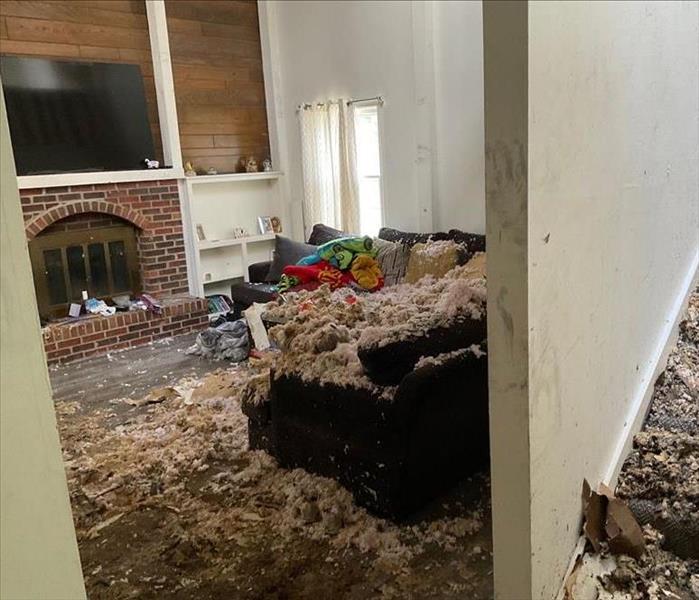 The dangers of smoking in the home are far-reaching.
The dangers of smoking in the home are far-reaching.
Smoking is a well-known hazard, but the dangers associated with smoking in the home are often underestimated. The adverse effects of smoking aren't limited to the smoker; they also impact the health and safety of family members and even the structural integrity of your home. In this blog, we will shed light on the significant dangers of smoking in your living space and provide insights on how to mitigate these risks.
1. Risks to Residents
Indoor Air Quality: Cigarette smoke contains thousands of chemicals, many of which are known to be harmful. When you smoke indoors, these chemicals can linger in the air, creating poor indoor air quality.
Secondhand Smoke Exposure: Even if you smoke in a separate room, the smoke and harmful chemicals can infiltrate other areas of your home. Children, in particular, are vulnerable to secondhand smoke.
2. Fire Hazards
Smoking in the home increases the risk of accidental fires. A smoldering cigarette, a dropped ember, or improper disposal of cigarette butts can easily lead to a devastating fire, risking lives and property.
3. Property Damage
Smoking indoors leaves behind a sticky, yellowish residue on walls, ceilings, and furniture. This residue, combined with the distinct odor of cigarette smoke, is challenging to remove and can significantly devalue your home. Smoking can also cause persistent stains and discoloration on various surfaces, including paint, upholstery, and carpets, necessitating costly replacements or extensive cleaning.
4. Increased Home Maintenance Costs
Due to the effects of smoking in the home, you may find yourself incurring additional maintenance costs. Frequent repainting, deep cleaning, and furniture replacements can quickly add up, making smoking an expensive habit beyond the cost of cigarettes themselves.
5. Reduced Resale Value
Smoking in your home can significantly reduce its resale value. Potential buyers are often deterred by the odor, stains, and potential hazards associated with a home that has been exposed to smoking.
The dangers of smoking in the home are far-reaching, impacting both your family's health and the condition of your property. To protect your loved ones and preserve your home's value, consider taking steps to quit smoking or designate a smoking area outside. By addressing these issues, you can create a better living environment for yourself and your family.
How Can I prevent Mold Growth In My Insulation?
11/20/2023 (Permalink)
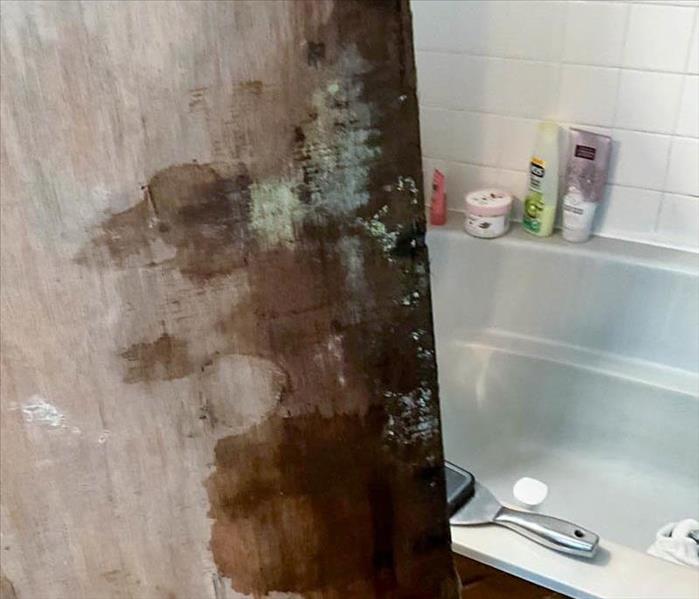 f you suspect mold in your insulation or need assistance with mold remediation, call our SERVPRO® of Downtown Minneapolis team!
f you suspect mold in your insulation or need assistance with mold remediation, call our SERVPRO® of Downtown Minneapolis team!
Mold prevention is a crucial concern for homeowners and property managers in the Minneapolis area. In today's post, we'll address a common challenge: how to prevent mold in insulation. With our region facing persistent mold issues, it's essential to have the right knowledge and proactive measures to ensure your insulation remains mold-free.
Choose the Right Insulation Materials
Begin your mold prevention journey by selecting insulation materials known for their resistance to mold. Fiberglass, foam board, and closed-cell spray foam insulation are good options.
Seal Gaps and Cracks
Properly seal any gaps, cracks, or openings in your home's walls, ceilings, and floors. This prevents moisture from infiltrating and coming into contact with your insulation.
Maintain Good Ventilation
Adequate ventilation is key to controlling moisture levels. Ensure that your attic, crawl spaces, and basement are well-ventilated to minimize humidity and condensation.
Install Vapor Barriers
In moisture-prone areas, consider installing vapor barriers. These plastic or foil sheets help block moisture from reaching your insulation.
Check for Roof Leaks
Regularly inspect your roof for leaks and address them promptly. Roof leaks can introduce water into your attic, leading to mold growth in insulation.
Keep Gutters Clean
Clogged gutters can cause water to overflow and seep into your home's walls and attic. Regularly clean and maintain your gutters to prevent this risk.
Properly Insulate and Ventilate Attics
Attics are often at risk for mold growth in insulation. Ensure your attic is adequately insulated and ventilated to control temperature and moisture.
Fix Plumbing Leaks Promptly
Leaky pipes can introduce moisture into your home, affecting insulation in walls and ceilings. Address plumbing issues as soon as they arise.
Monitor Indoor Humidity
Invest in a humidity monitor to keep track of indoor humidity levels. Aim for humidity levels between 30-50% to prevent mold growth.
Regular Inspection and Maintenance
Perform regular inspections of your insulation, especially in vulnerable areas like basements and crawl spaces. Look for signs of moisture or mold growth.
Remove Mold-Prone Items
Avoid storing organic materials like wood or cardboard near insulation. These materials can trap moisture and encourage mold growth.
Preventing mold in insulation is essential for maintaining a safe and comfortable home in Minneapolis. By following these proactive measures, you can safeguard your insulation from mold growth, ensuring it remains efficient and mold-free. Remember, mold prevention is an investment in your property's longevity and your family's well-being.
If you suspect mold in your insulation or need assistance with mold remediation, contact SERVPRO® of Downtown Minneapolis. Our experienced team is here to help you keep your Minneapolis property mold-free.
How to Clean Carpets and Rugs After Water Damage in Minneapolis
10/25/2023 (Permalink)
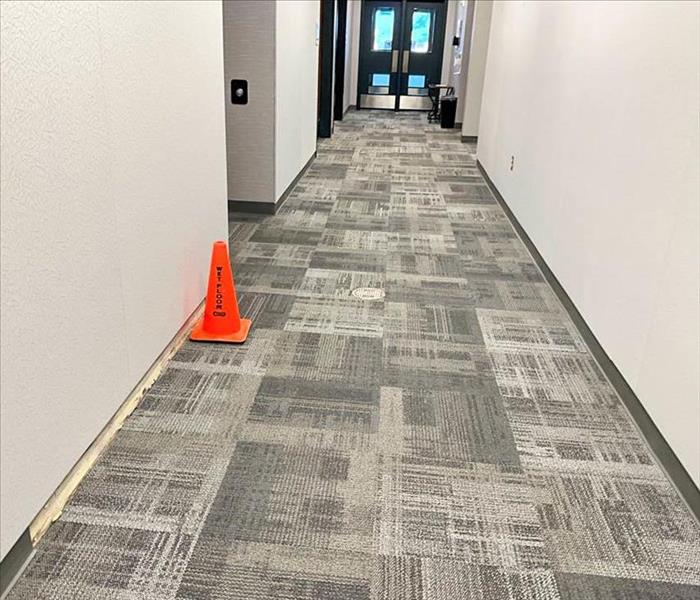 Water incidents can happen suddenly and wreak havoc on your home or business.
Water incidents can happen suddenly and wreak havoc on your home or business.
Water incidents can happen suddenly and wreak havoc on your Minneapolis home or business. Whether it's a burst pipe, a roof leak, or a flooding event, one of the most significant challenges is dealing with water-soaked carpets and rugs. In this blog, we'll guide you through the essential steps to effectively clean and restore your carpets and rugs after a water incident, helping you regain a clean, comfortable living or working space.
Act Quickly
Time is of the essence when dealing with water-soaked carpets and rugs. The longer moisture lingers, the higher the risk of mold growth and structural damage. As soon as it's safe to do so, start the cleanup process.
Ensure Safety First
Before tackling the carpet or rug, make sure the affected area is safe to enter. Turn off electricity if water has come into contact with electrical outlets or appliances to avoid electrocution hazards.
Extract Excess Water
Use a wet/dry vacuum or a mop to remove as much standing water as possible. This step is crucial in preventing further water absorption and reducing drying time.
Remove and Inspect
Lift and remove the affected carpet or rug from the floor. Check the padding and subfloor for any signs of moisture or damage. These areas also need thorough drying and cleaning.
Dry Thoroughly
Proper drying is essential to prevent mold growth and odors. Use fans, dehumidifiers, and open windows to facilitate drying. A professional water damage restoration service, such as SERVPRO of Downtown Minneapolis, can ensure thorough drying of all affected components.
Clean and Sanitize
After drying, clean the carpet or rug thoroughly. Use a mild detergent and warm water to remove dirt and contaminants. Sanitize with a mixture of water and white vinegar to prevent mold and bacteria growth.
Professional Assessment
It's advisable to have a professional, such as SERVPRO, assess the extent of the damage and perform necessary treatments. They can identify hidden moisture and ensure your carpets and rugs are safe and free from contaminants.
Cleaning and restoring carpets and rugs after water incidents in Minneapolis require prompt action and thorough attention to detail. While some steps can be taken by homeowners, it's essential to consider professional assistance, especially in cases of severe water damage. At SERVPRO of Downtown Minneapolis, we have the expertise and equipment to handle water damage restoration and ensure your carpets and rugs are clean, safe, and comfortable once again. Contact us for professional assistance and peace of mind in the face of water incidents.
A Guide to Storm-Proofing Your Minneapolis Home
9/13/2023 (Permalink)
Living in the beautiful Minneapolis area comes with its fair share of weather challenges, particularly when it comes to storms. While we can't control the weather, we can certainly take steps to protect our homes and loved ones from its unpredictable wrath. One of the most vulnerable aspects of your home during a storm is its windows and doors. In this guide, we'll delve into the essential strategies and tips for storm-proofing your windows, doors, and overall home, ensuring your peace of mind and safety when the skies darken.
The Importance of Storm-Proofing
When storm clouds gather and winds howl, your windows and doors become your first line of defense. Proper storm-proofing not only safeguards your home's structural integrity but also shields your belongings and loved ones from potential harm. The Minneapolis area experiences a wide range of weather, from winter blizzards to summer thunderstorms. Storm-proofing your windows and doors can mitigate damage and reduce the risk of expensive repairs.
Choose Impact-Resistant Windows and Doors
Investing in impact-resistant windows and doors is a smart move for Minneapolis homeowners. These specialized windows and doors are designed to withstand flying debris and intense winds. They are constructed with reinforced frames and shatter-resistant glass, offering an extra layer of protection during storms. While the initial investment may be higher, the long-term benefits far outweigh the cost.
Reinforce Existing Windows and Doors
If you're not ready to replace your windows and doors, reinforcing them is a viable alternative. Apply clear, high-quality window film to glass surfaces to minimize shattering. Install storm shutters or panels that can be easily affixed when a storm is imminent. Reinforce doors with heavy-duty deadbolts and sturdy frames to prevent them from being blown open by strong winds.
Maintain Proper Sealing
A key aspect of storm-proofing is maintaining a tight seal around your windows and doors. Check for gaps, cracks, or deteriorating weather stripping that could allow water and wind to infiltrate your home. Apply caulk or weather stripping as needed to create a barrier against the elements. Proper sealing also helps with energy efficiency, reducing heating and cooling costs.
Landscaping for Storm Protection
Strategic landscaping can act as a natural buffer during storms. Plant windbreaks, such as dense shrubs or trees, on the windward side of your home to deflect strong gusts. Keep trees well-trimmed to prevent branches from falling onto windows and roofs during storms. Additionally, consider using gravel or permeable surfaces to minimize water accumulation near your home's foundation.
Emergency Preparedness
No storm-proofing strategy is complete without a well-thought-out emergency plan. Create a family emergency kit with essential supplies, including flashlights, batteries, non-perishable food, and water. Designate a safe area in your home, such as a basement or an interior room, where your family can take shelter during severe weather. Stay informed by signing up for weather alerts and familiarize yourself with local evacuation routes.
In the ever-changing climate of Minneapolis, storm-proofing your windows, doors, and home is a wise investment in your property's longevity and your family's safety. By taking proactive steps such as investing in impact-resistant windows, reinforcing existing openings, maintaining proper sealing, and implementing strategic landscaping, you can fortify your home against the elements. Remember, an effective storm-proofing plan is a comprehensive one that includes both preventive measures and emergency preparedness. With these strategies in place, you can face whatever Mother Nature throws your way with confidence and resilience.
The Importance of Emergency Board-Up Services in Preventing Further Loss After a Fire
8/15/2023 (Permalink)
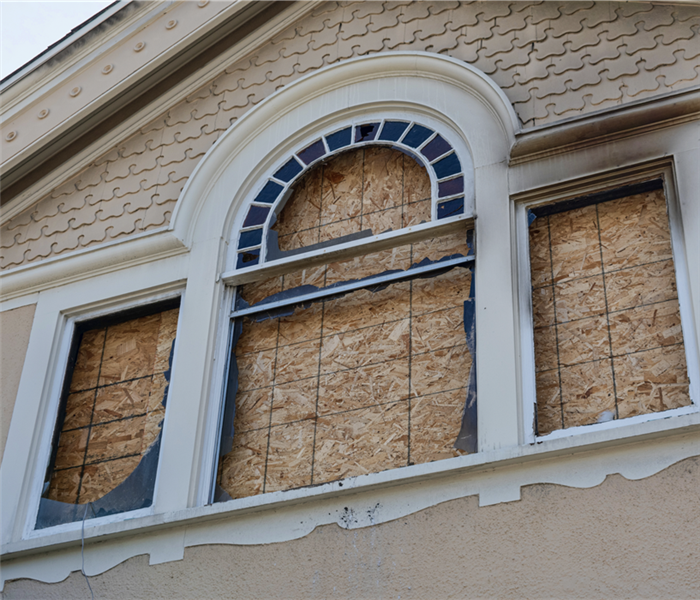 Taking immediate action through emergency board-up services can make a significant difference in preventing further loss.
Taking immediate action through emergency board-up services can make a significant difference in preventing further loss.
A fire can strike unexpectedly, leaving a trail of devastation in its wake. As a homeowner, the safety and security of your property and loved ones are paramount. In the aftermath of a fire, one crucial step that can prevent further loss and damage to your home is emergency board-up services. In this article, we will explore the importance of emergency board-up after fire damage and how it can safeguard your property while facilitating the restoration process.
1. Securing Your Property Against Unauthorized Access
After a fire incident, your home may be left vulnerable to trespassers, vandals, or looters. Emergency board-up services provide an immediate solution to secure your property and prevent unauthorized access. By boarding up broken windows, doors, and other openings, you create a barrier that deters potential intruders and protects your home from further damage or theft.
2. Mitigating Weather-Related Damage
Exposing your fire-damaged property to the elements can exacerbate the destruction caused by the fire. Rain, wind, and other weather elements can seep into the unprotected areas, causing water damage and mold growth. Emergency board-up services act as a temporary shield against adverse weather conditions, giving you valuable time to initiate the restoration process and minimize additional losses.
3. Reducing Liability Risks
As a homeowner, you have a duty of care to ensure the safety of visitors and passersby. Leaving your property exposed and unsafe after a fire could lead to accidents or injuries on your premises, which might result in legal liabilities. Emergency board-up services create a safer environment by covering sharp debris and hazardous areas, reducing the risk of accidents and potential lawsuits.
4. Facilitating the Insurance Claims Process
Dealing with insurance claims after a fire can be a complex and time-consuming process. Insurance companies often require evidence of efforts to mitigate further damage to approve your claim. Emergency board-up services provide documented proof that you took immediate action to secure your property and protect it from additional harm. This documentation can streamline the insurance claims process and help you recover your losses more efficiently.
5. Preserving Valuables and Belongings
Fire damage doesn't only affect the structure of your home; it can also harm your valuable belongings and sentimental items. Emergency board-up services can help preserve these belongings by sealing off affected areas and preventing further exposure to smoke, soot, and debris. This ensures a higher chance of salvaging precious possessions during the restoration process.
6. Allowing for a Systematic Restoration Plan
After a fire, it's crucial to create a comprehensive restoration plan. Emergency board-up services provide the time and space needed for a thorough assessment of the damage. Restoration professionals, such as SERVPRO of Downtown Minneapolis, can then develop a systematic plan to restore your property efficiently. Boarding up the affected areas prevents additional complications and helps restoration teams focus on the most critical tasks.
Facing fire damage is undoubtedly a distressing experience for any homeowner. However, taking immediate action through emergency board-up services can make a significant difference in preventing further loss and facilitating the restoration process. By securing your property, protecting it from weather-related damage, and preserving valuable belongings, emergency board-up services act as a crucial first step towards rebuilding and recovering your home. Remember to engage reputable and experienced professionals to ensure the utmost care and expertise during this essential phase of the recovery journey.
Everything You Need to Know About Refrigerator Leaks
7/20/2023 (Permalink)
A refrigerator is an indispensable appliance that keeps our food fresh and drinks cool. However, when a refrigerator leak occurs, it can lead to significant water damage and potential mold growth if not dealt with promptly. In this blog, we will cover everything you need to know about refrigerator leaks, including their causes, signs, preventive measures, and steps to restore your home in case of water damage.
Causes of Refrigerator Leaks
Refrigerator leaks can result from various factors, including a damaged or clogged defrost drain, faulty water supply line or valve, leaking water filter, cracked or damaged water line connections, and improperly installed or damaged drain pan.
Signs and Symptoms of Refrigerator Leaks
Look out for the following signs that indicate a refrigerator leak, including puddles of water near the refrigerator, wet or stained flooring or walls around the appliance, unpleasant odors emanating from the refrigerator, and the formation of ice or frost inside the refrigerator.
Preventive Measures
To prevent refrigerator leaks, follow these preventive measures, including regularly inspecting and cleaning the defrost drain and drain pan, checking the water supply line for any signs of damage or leaks, replacing old or damaged water filters as recommended by the manufacturer, and ensuring proper installation and maintenance of the refrigerator's water connections.
Immediate Steps to Take When a Refrigerator Leak Occurs
If you notice a refrigerator leak, take immediate steps to address the issue. Turn off the water supply to the refrigerator, safely remove any perishable items from the appliance, clean up the water using towels or a wet/dry vacuum, and thoroughly dry the affected area to prevent further damage.
Restoring Your Home After a Refrigerator Leak
In case of water damage from a refrigerator leak, assess the extent of the damage and consult a professional restoration company. Use dehumidifiers and fans to dry out the affected area, repair or replace damaged flooring, walls, or cabinetry, and address any mold or mildew growth with proper remediation techniques.
Being aware of the causes, signs, and preventive measures for refrigerator leaks can save you from extensive water damage and potential mold growth. If you experience a refrigerator leak, act promptly, address the issue, and restore your home to its pre-damaged condition. In case of significant damage or if you require professional assistance, contact a trusted disaster restoration company, such as our SERVPRO of Downtown Minneapolis team, to efficiently and effectively handle the restoration process.
By following these guidelines and promptly addressing refrigerator leaks, you can protect your home from water damage and ensure the longevity of your appliance. Proper maintenance and quick action are essential when dealing with refrigerator leaks. Stay informed, take preventive measures, and enjoy a hassle-free experience with your refrigerator.
Rain Damage in Your Home: Protecting Your Property from Nature's Elements
5/18/2023 (Permalink)
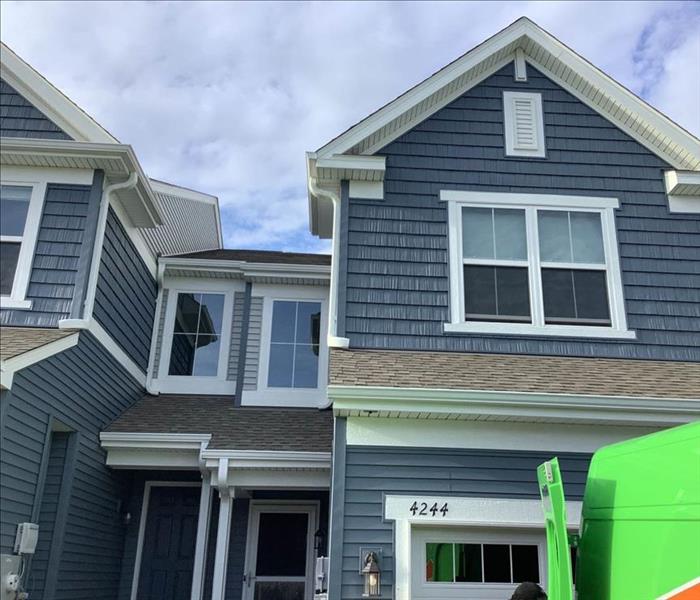 The elements can affect your home no matter the time of year, especially rain damage.
The elements can affect your home no matter the time of year, especially rain damage.
Rain is a natural occurrence that can bring life to our surroundings, but when it comes to our homes, excessive rainfall can lead to significant damage. Understanding the impact of rain damage and taking proactive steps to protect your property is essential. In this blog, we will discuss the various ways rain can affect your home and provide valuable tips to mitigate potential damage.
Roof Leaks
The first line of defense against rain is your roof, but it can be vulnerable to leaks if not properly maintained. Heavy rainstorms can compromise the integrity of your roof, leading to water seepage and structural damage. Regularly inspecting your roof for missing shingles, damaged flashing, or deteriorated sealants is crucial. Promptly addressing any issues through professional repairs can prevent leaks and protect your home's interior from water damage.
Foundation Issues
Excessive rainwater can seep into the soil surrounding your home's foundation, causing it to expand and contract. This constant shifting can weaken the foundation over time, leading to cracks, uneven settling, and structural instability. To prevent rain-related foundation problems, ensure proper drainage around your property. Regularly clean and maintain your gutters and downspouts, directing water away from the foundation. Consider installing a foundation drainage system or French drains to manage excess water effectively.
Basement Flooding
Basements are particularly susceptible to water damage, especially during heavy rainstorms. Poor drainage, cracks in the foundation, or malfunctioning sump pumps can allow rainwater to seep into your basement. To minimize the risk of basement flooding, keep your gutters and downspouts clear of debris, install window well covers, and seal any cracks in the foundation. Consider investing in a reliable sump pump system and regularly inspect and maintain it to ensure it functions properly when needed.
Mold and Mildew Growth
Excessive moisture from rain can create a conducive environment for mold and mildew growth within your home. Proper ventilation and dehumidification are essential to control moisture levels. Ensure that bathrooms, kitchens, and laundry rooms are adequately vented, and repair any leaks promptly. Additionally, consider using mold-resistant materials in areas prone to moisture, such as bathrooms and basements.
Protecting your home from rain damage is vital to maintain its structural integrity and preserve its value. By understanding the potential impacts of rain, regularly inspecting your property, and taking preventive measures, you can minimize the risk of water-related issues. Prioritize maintenance, address any problems promptly, and consider consulting with professionals for comprehensive solutions to safeguard your home against the forces of nature.
Signs of Mold in Your Bathroom
5/18/2023 (Permalink)
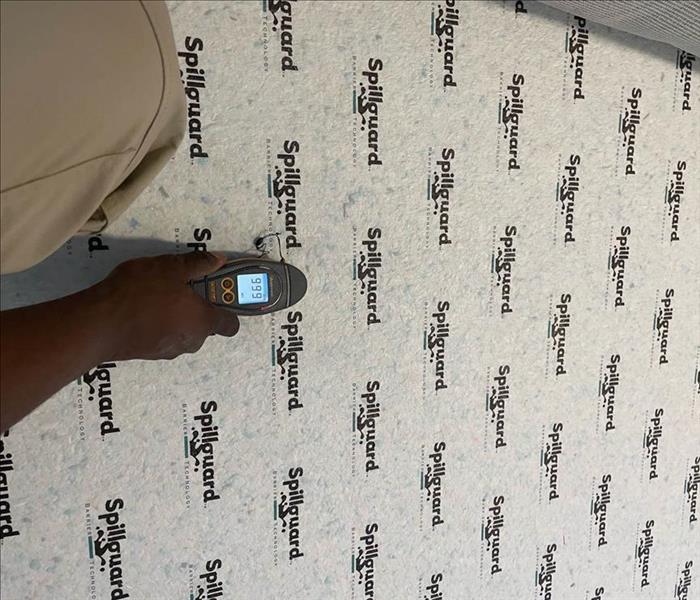 If you see signs of mold damage in your home, our team can inspect the affected areas and remove the mold damage.
If you see signs of mold damage in your home, our team can inspect the affected areas and remove the mold damage.
As a homeowner, it's essential to be proactive in protecting your property from potential hazards. One such threat that can silently infiltrate your bathroom is mold. By being aware of the indicators of a mold infestation, you can take swift action to address the issue and safeguard your home. Let's explore the telltale signs of mold so that you can tackle it head-on.
Musty Odors
A distinct, musty odor is often the first indication of mold growth in your bathroom. If you notice a damp, earthy scent that persists even after thorough cleaning, it's time to investigate further. Mold thrives in moist environments, and bathrooms are prime breeding grounds due to the constant presence of moisture. Be particularly attentive to persistent odors emanating from areas around sinks, showers, and toilets, as these are common places for mold to develop.
Visible Discoloration
Mold growth typically manifests as visible discoloration on various surfaces in your bathroom. Look for patches or streaks of black, green, brown, or white that appear on walls, ceilings, tiles, grout lines, or caulking. Keep in mind that mold can thrive in hidden areas too, such as behind wallpaper or under bathroom fixtures. Regularly inspect these less noticeable spots to ensure you catch any early signs of mold growth.
Peeling or Bubbling Paint and Wallpaper
If you notice paint or wallpaper in your bathroom peeling or bubbling, it could indicate the presence of mold. Moisture from mold growth can weaken adhesives, causing the paint or wallpaper to lose its grip on the surface. Pay attention to areas near showers, tubs, and sinks, where water splashes are more likely to occur. If you notice these signs, it's crucial to investigate further to prevent the mold from spreading and causing more significant damage.
Excessive Condensation
Bathrooms tend to be humid environments due to hot showers and baths. However, if you observe excessive condensation on windows, mirrors, or bathroom fixtures even after proper ventilation, it might suggest a mold problem. Mold thrives in moist environments, and excessive condensation provides the ideal breeding ground. Consider using a dehumidifier to control the moisture levels in your bathroom and prevent mold growth.
Recognizing the signs of mold in your bathroom is key to tackling the issue promptly. By being vigilant and aware of musty odors, visible discoloration, peeling or bubbling paint and wallpaper, and excessive condensation, you can catch mold growth early on. Remember, addressing mold growth promptly is essential to protect your home and maintain a healthy living environment. If you suspect mold in your bathroom, it's always wise to consult with professionals, such as SERVPRO of Downtown Minneapolis, who specialize in mold remediation to ensure thorough removal.
Understanding Your Flood Risk in Minnesota
5/18/2023 (Permalink)
 Use a local flood hazard map to understand your flood risk in your MN area.
Use a local flood hazard map to understand your flood risk in your MN area.
Living in Minnesota means embracing its beautiful landscapes, including its lakes and rivers. However, it also entails understanding the potential risk of flooding. Being aware of your flood risk is essential for preparedness and safeguarding your property. In this blog, we will provide you with valuable insights and practical steps to assess your flood risk in Minnesota. By understanding the factors involved and utilizing available resources, you can make informed decisions and take necessary measures to protect your home and loved ones.
Evaluating Local Flood Hazard Maps
One of the primary resources for assessing flood risk in Minnesota is the use of local flood hazard maps. These maps, often provided by government agencies or the Federal Emergency Management Agency (FEMA), depict areas prone to flooding. They categorize flood zones based on the likelihood and severity of flooding. By accessing these maps, you can identify if your property falls within a high-risk, moderate-risk, or low-risk flood zone. This information will help you determine the level of preparedness and mitigation measures needed.
Understanding the Role of Watersheds and Drainage Systems
Minnesota's landscape is characterized by numerous watersheds and drainage systems that play a crucial role in determining flood risk. Understanding the watersheds in your area can provide insight into how water flows and accumulates during heavy rainfall or snowmelt. Local government agencies often provide information about watersheds and drainage systems, which can help you assess your flood risk. By familiarizing yourself with these geographic features, you can gain a better understanding of how they might affect your property and make informed decisions regarding flood mitigation.
Consulting Local Authorities and Experts
Local authorities and floodplain managers are valuable sources of information when it comes to understanding flood risk. They possess in-depth knowledge about historical flood patterns, local drainage systems, and floodplain regulations. Reach out to your local government agencies or floodplain management departments to gather information specific to your area. Additionally, consider consulting with experts in flood risk assessment, such as professional hydrologists or disaster restoration companies. These professionals can provide personalized guidance and recommendations based on their expertise and experience.
Utilizing Online Resources and Tools
The internet offers a wealth of resources and tools to assess flood risk in Minnesota. Websites such as the Minnesota Department of Natural Resources (DNR) and FEMA provide online tools and floodplain information that can assist you in determining your flood risk. These resources often include interactive maps, flood risk calculators, and educational materials. By utilizing these online tools, you can gather valuable information and gain a better understanding of your specific flood risk factors.
Assessing your flood risk in Minnesota is a vital step in preparedness and protecting your property. By evaluating local flood hazard maps, understanding watersheds and drainage systems, consulting local authorities, and utilizing online resources, you can gain insights to make informed decisions. Stay proactive, stay informed, and take necessary measures to mitigate flood risks, ensuring the safety and security of your home and loved ones.
Exploring Types of Vandalism and How SERVPRO Can Help
5/18/2023 (Permalink)
Vandalism can be a distressing experience that leaves your property damaged and in need of professional cleanup. Understanding the different types of vandalism and the effective cleanup methods provided by SERVPRO of Downtown Minneapolis can help you restore your property and regain peace of mind. In this blog, we will explore common types of vandalism and how SERVPRO, a trusted disaster restoration company, employs specialized techniques to clean up and restore your property after acts of vandalism.
Graffiti and Tagging
Graffiti and tagging are forms of vandalism that can deface your property and negatively impact its appearance. SERVPRO utilizes professional-grade cleaning solutions and techniques to effectively remove graffiti without causing further damage to the surface. Their team of experienced technicians can safely and efficiently clean various surfaces, including brick, concrete, wood, and metal. Whether it's pressure washing, chemical treatments, or other specialized methods, SERVPRO has the expertise and equipment to restore your property to its original state.
Broken Glass and Windows
Vandalism often involves the destruction of windows and glass surfaces, leading to safety hazards and property damage. SERVPRO responds promptly to such incidents and employs careful glass removal procedures, ensuring the safety of everyone involved. Their trained professionals will thoroughly clean up shattered glass and board up the affected areas to secure your property. Additionally, SERVPRO can coordinate the window replacement process, working with trusted vendors to restore your windows quickly and efficiently.
Property Damage and Defacement
Acts of vandalism may result in property damage and defacement, ranging from scratched surfaces to damaged doors, walls, and more. SERVPRO understands the importance of comprehensive restoration and offers a wide range of services to address different types of property damage. Their experienced technicians will assess the extent of the damage, develop a tailored restoration plan, and provide professional repairs, painting, or replacement as necessary. With SERVPRO's expertise, your property can be restored to its pre-vandalism condition efficiently and effectively.
Fire and Smoke Damage
In some cases, vandalism can involve acts of fire or smoke damage, posing additional challenges for cleanup and restoration. SERVPRO specializes in fire and smoke damage restoration, employing advanced techniques and equipment to remove soot, eliminate odors, and restore your property. Their trained technicians will thoroughly assess the damage, provide emergency board-up services if needed, and proceed with a meticulous cleaning and deodorization process. SERVPRO's comprehensive approach ensures that both visible and hidden fire and smoke damage is addressed, allowing you to recover from vandalism-related incidents effectively.
Vandalism can be a distressing experience, but with the help of SERVPRO, your property can be restored efficiently and effectively. Whether it's graffiti removal, glass cleanup, property damage repairs, or fire and smoke damage restoration, SERVPRO's experienced technicians employ specialized techniques to clean up and restore your property to its pre-vandalism condition. Trust our SERVPRO team to handle your vandalism cleanup needs, providing professional and reliable services to help you regain peace of mind.
A Comprehensive Guide to Effective Mold Removal and Prevention
5/11/2023 (Permalink)
 The best way to prevent mold damage is to address any water damage issues promptly.
The best way to prevent mold damage is to address any water damage issues promptly.
Mold damage can be a serious problem in homes and businesses, as it can cause significant damage to property and be difficult to remove. Mold growth can occur in areas with high humidity or water damage, and it's important to act quickly to prevent the mold from spreading. In this blog, we will discuss the mold damage cleanup and remediation process and how to effectively remove mold from your property.
Assessment and Inspection
The first step in the mold damage cleanup and remediation process is to assess and inspect the property. A professional restoration company, such as our SERVPRO® team, will conduct a thorough inspection to determine the extent of the mold damage and identify the source of the problem. This will involve checking for visible signs of mold growth, as well as using specialized equipment to detect hidden mold.
Containment and Air Filtration
Once the extent of the mold damage has been identified, the restoration company will begin the containment process. This involves sealing off the affected area to prevent the mold spores from spreading to other areas of the property. Air filtration systems may also be used to remove mold spores from the air.
Removal of Mold-Infested Materials
The next step in the mold damage cleanup and remediation process is to remove any mold-infested materials. This may include drywall, carpeting, insulation, and other porous materials that cannot be effectively cleaned. These materials will be carefully disposed of to prevent further mold growth and contamination.
Cleaning and Disinfection
After the mold-infested materials have been removed, the restoration company will begin the cleaning and disinfection process. This involves using specialized equipment and cleaning products to thoroughly clean and sanitize the affected areas. The goal is to eliminate all mold spores and prevent any further mold growth.
Drying and Restoration
Once the cleaning and disinfection process is complete, the affected areas will be dried thoroughly to prevent any remaining moisture from causing further mold growth. The restoration company will then begin the process of restoring the property to its pre-damage condition. This may include replacing drywall, carpeting, and other materials that were removed during the cleanup process.
Prevention
The best way to prevent mold damage is to address any water damage or high humidity issues promptly. This may involve fixing leaks, improving ventilation, and using dehumidifiers in damp areas. Regular cleaning and maintenance can also help prevent mold growth.
In conclusion, mold damage cleanup and remediation is a complex process that requires specialized equipment and expertise. It's important to act quickly to prevent mold from spreading and causing further damage. If you suspect you have mold growth in your home or business, contact a professional restoration company to help safely remove the mold and restore your property to its pre-damage condition.



 24/7 Emergency Service
24/7 Emergency Service







